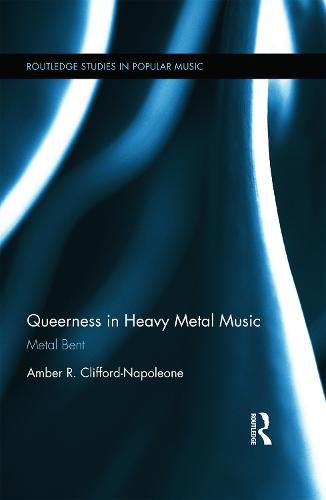Readings Newsletter
Become a Readings Member to make your shopping experience even easier.
Sign in or sign up for free!
You’re not far away from qualifying for FREE standard shipping within Australia
You’ve qualified for FREE standard shipping within Australia
The cart is loading…






While the growing field of scholarship on heavy metal music and its subcultures has produced excellent work on the sounds, scenes, and histories of heavy metal around the world, few works have included a study of gender and sexuality. This cutting-edge volume focuses on queer fans, performers, and spaces within the heavy metal sphere, and demonstrates the importance, pervasiveness, and subcultural significance of queerness to the heavy metal ethos.
Heavy metal scholarship has until recently focused almost solely on the roles of heterosexual hypermasculinity and hyperfemininity in fans and performers. The dependence on that narrow dichotomy has limited heavy metal scholarship, resulting in poorly critiqued discussions of gender and sexuality that serve only to underpin the popular imagining of heavy metal as violent, homophobic and inherently masculine. This book queers heavy metal studies, bringing discussions of gender and sexuality in heavy metal out of that poorly theorized dichotomy.
In this interdisciplinary work, the author connects new and existing scholarship with a strong ethnographic study of heavy metal’s self-identified queer performers and fans in their own words, thus giving them a voice and offering an original and ground-breaking addition to scholarship on popular music, rock, and queer studies.
$9.00 standard shipping within Australia
FREE standard shipping within Australia for orders over $100.00
Express & International shipping calculated at checkout
While the growing field of scholarship on heavy metal music and its subcultures has produced excellent work on the sounds, scenes, and histories of heavy metal around the world, few works have included a study of gender and sexuality. This cutting-edge volume focuses on queer fans, performers, and spaces within the heavy metal sphere, and demonstrates the importance, pervasiveness, and subcultural significance of queerness to the heavy metal ethos.
Heavy metal scholarship has until recently focused almost solely on the roles of heterosexual hypermasculinity and hyperfemininity in fans and performers. The dependence on that narrow dichotomy has limited heavy metal scholarship, resulting in poorly critiqued discussions of gender and sexuality that serve only to underpin the popular imagining of heavy metal as violent, homophobic and inherently masculine. This book queers heavy metal studies, bringing discussions of gender and sexuality in heavy metal out of that poorly theorized dichotomy.
In this interdisciplinary work, the author connects new and existing scholarship with a strong ethnographic study of heavy metal’s self-identified queer performers and fans in their own words, thus giving them a voice and offering an original and ground-breaking addition to scholarship on popular music, rock, and queer studies.